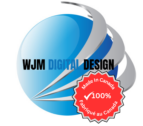Are free websites really free?
Are free websites really free? If you scroll through social media long enough, you’ve probably seen ads or posts offering “free websites”. They sound appealing, especially if you’re a small business owner, entrepreneur, or creative just starting out. Who wouldn’t want a professional website for free, right? But as the saying goes: if it seems too good to be true, it probably is. Here’s what you need to know about these so called “free website” offers and why caution is key. 1. The Free Website Isn’t Really Free Most of the time, the site itself is free only on a temporary trial or comes with severe limitations. You’ll quickly run into restrictions such as: Ads placed all over your site (which you can’t remove unless you pay). A forced domain name like yourbusiness.freewebsitename.com instead of yourbusiness.com. Limited storage and bandwidth. To get a truly usable site, you’ll usually have to upgrade and those upgrades often cost more than building a proper site from the start. 2. Your Data Becomes the Product Many of these platforms survive not by charging you directly, but by collecting and monetizing your information. They may: Sell your email and business info to third parties. Track user behavior for advertising purposes. Lock your content into their system so you can’t easily move it elsewhere. You’re essentially paying with your data and privacy. 3. Hidden Costs Add Up Even if the base site is free, you’ll often discover hidden fees: Premium features (SEO, e-commerce, analytics) only available on paid plans. Expensive hosting or domain name markups. Surprise renewal fees once your “introductory period” ends. The free entry point is simply a hook to get you invested before the bills start coming. 4. You Don’t Own the Platform With many free website services, you’re building on rented land. If the platform shuts down, changes terms, or decides to suspend your account, your site can vanish overnight. Unlike owning your own domain and hosting, you have little to no control. 5. Professionalism Suffers Customers and clients can tell when a site is built on a free platform. Free domains, pop-up ads, and limited functionality can make your brand look less credible. What you save upfront can cost you in reputation and missed opportunities. How to Protect Yourself Do your research before signing up for any “free website” offer. Read the fine print about hosting, domain ownership, and upgrade costs. Invest in your own domain and hosting this gives you control and credibility. Think long-term: A cheap or free solution may hold you back as your business grows. The Bottom Line Free websites promoted on social media are rarely free in the ways that matter. The catch is almost always hidden in ads, data collection, upgrade costs, or lack of ownership. If you’re serious about your online presence, it’s worth investing in a website you truly control. Ready to ditch the gimmicks and build something real? Contact WJM Digital Design today to get started on a website that works for you, not against you https:wjmdigitaldesign.com
Are free websites really free? Read More »
